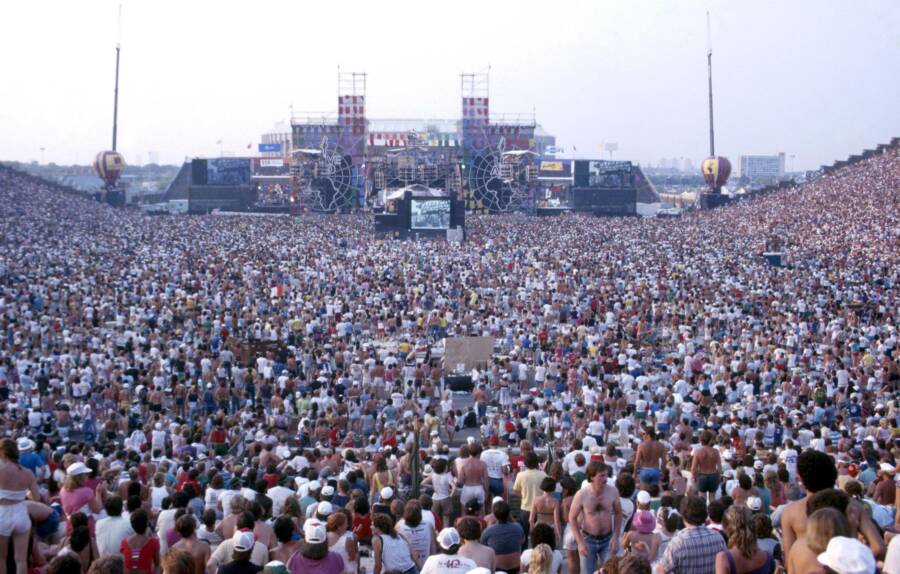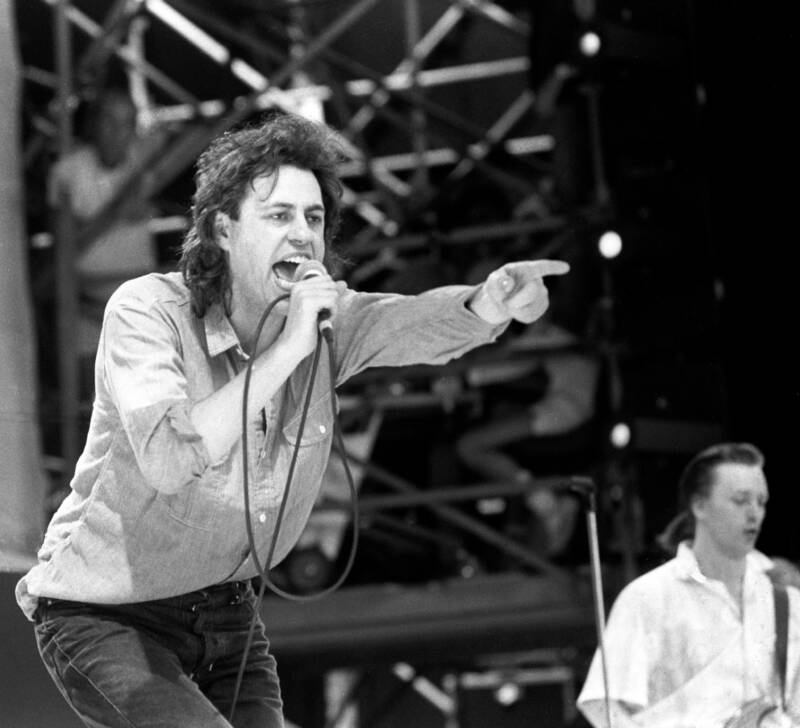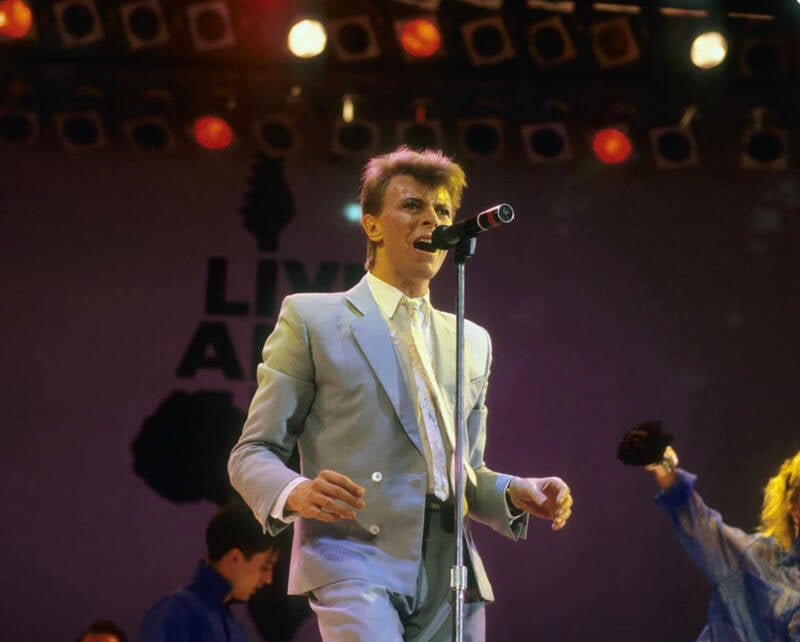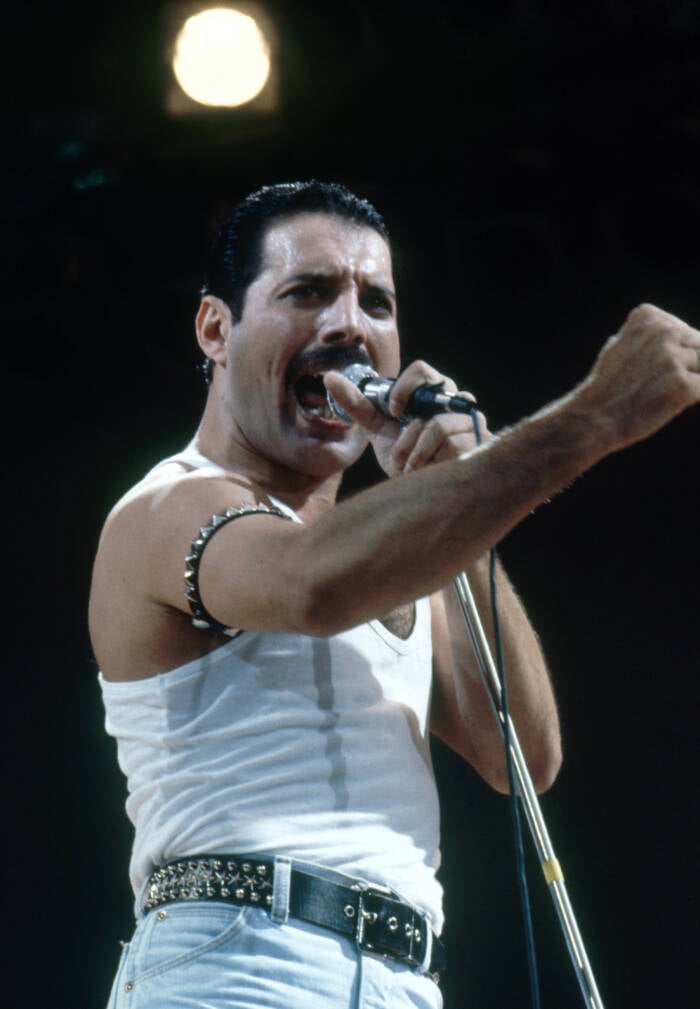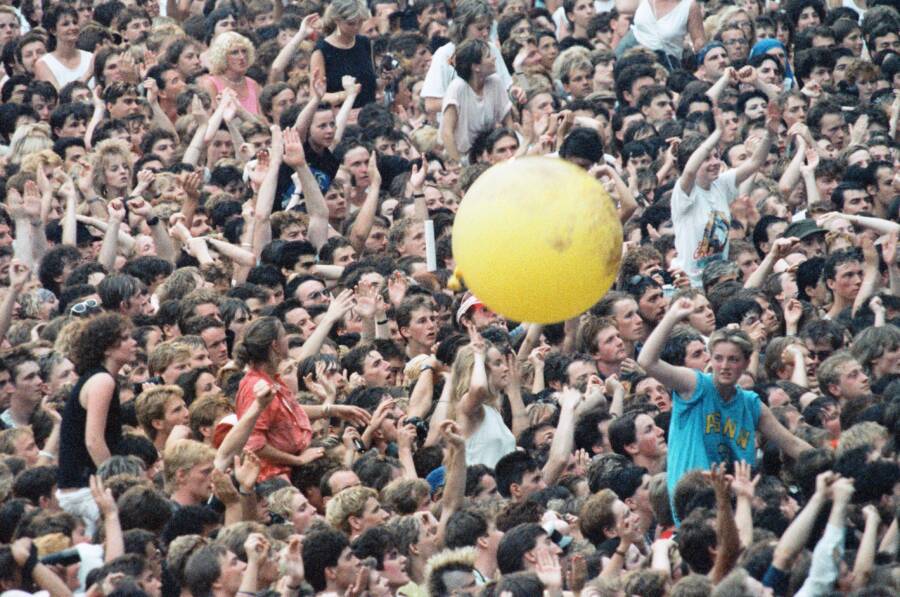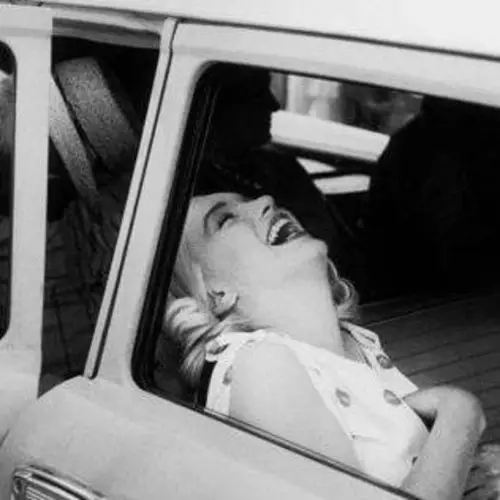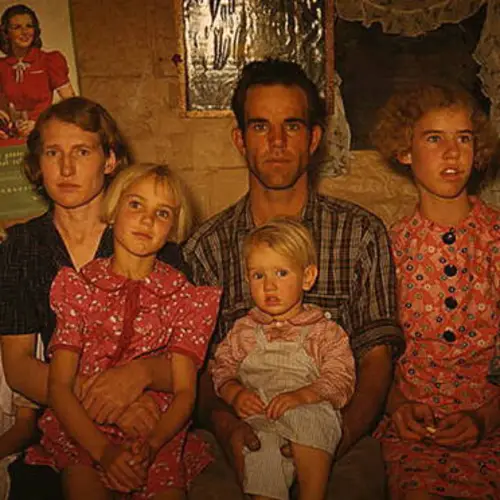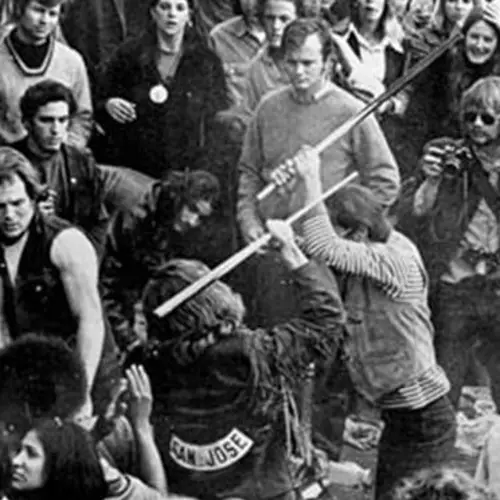From career-defining performances by Queen and U2 to the public awareness raised for Ethiopian famine relief, take a look back at the historic 1985 Live Aid benefit concert.
In the mid-1980s, Ethiopia was in the midst of a devastating famine. Television reports by BBC journalist Michael Buerk brought the horror of mass starvation into living rooms worldwide, showing emaciated people struggling to survive. These images were so powerful that they moved an entire generation into action, especially the Irish musician Bob Geldof.
Geldof, the lead singer of The Boomtown Rats, was deeply affected by Buerk's reports. After visiting Ethiopia in 1984 to witness the famine firsthand, he organized a group of musicians to form Band Aid, releasing the single "Do They Know It's Christmas?" and raising funds for Ethiopian famine relief. Despite Band Aid's success, Geldof felt there was more to be done.
Soon, Geldof dreamed up one of the most ambitious concert events since Woodstock: Live Aid. Live Aid was a two-venue benefit concert held in London's Wembley Stadium and Philadelphia's JFK Stadium on July 13, 1985. It gathered some of the world's biggest musical acts to perform and raise money for the Ethiopian cause, creating a moment of global solidarity.
It was a monumental feat, but even though Live Aid reportedly raised over $100 million for famine relief, getting that aid to the people who needed it was difficult because of Mengistu Haile Mariam, the Ethiopian dictator who ruled the country with an iron fist. Disturbingly, allegations later emerged that much of the money was diverted by rebels and spent on weapons.
Live Aid's cause was noble, but it likely didn't account for a dictator's will.
The Ethiopian Famine Crisis Of The 1980s That Sparked A Movement
From 1983 to 1985, Ethiopia faced one of its worst famines. Around one-fifth of the population — 7.75 million — were affected, suffering as a result of drought compounded by war and government policies. Death estimates vary, but most figure anywhere between 300,000 and 1.2 million lives were lost.
According to the House of Lords Library, the regime led by Mengistu Haile Mariam was reportedly utilizing scorched earth tactics in its fight against various rebel groups, which destroyed food and livestock in rebel regions. Many humanitarian experts believe Mengistu's government was using hunger as a weapon, leading to many of the deaths that occurred during the famine.
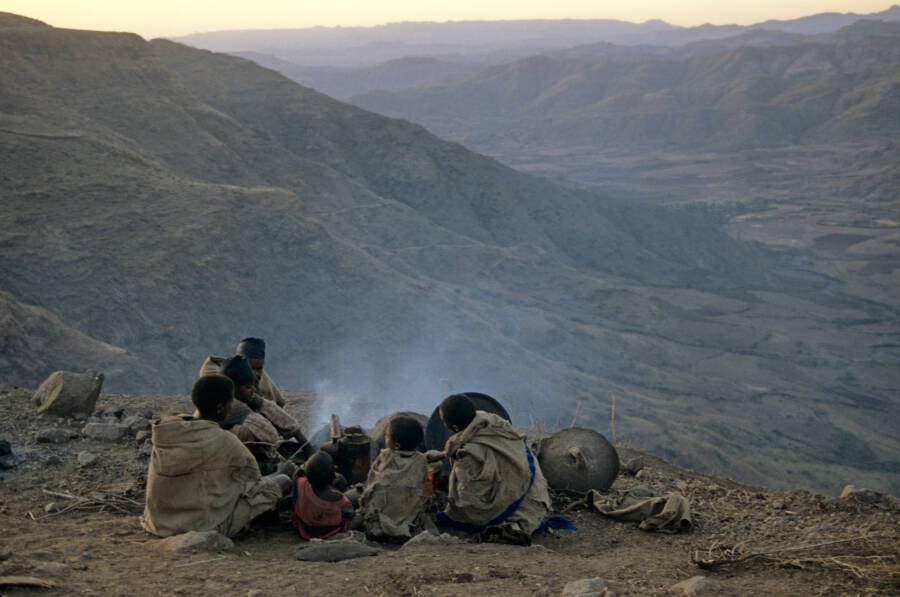
Robert Estall photo agency/Alamy Stock PhotoA group of refugees camping out in Ethiopia in the 1980s.
But in much of the Western world, reporting on the famine — and the circumstances surrounding it — was slim. As the Ethiopian government bombed markets, disrupted trade convoys, and prevented food distribution in areas like Tigray, Wollo, and parts of Eritrea, life elsewhere moved on.
Then, in 1984, BBC reporter Michael Buerk reported from Wollo valley, which had by then become a massive open-air camp of refugees fleeing civil war and desperately searching for food and water. More and more people died with each passing night, and in the morning, trucks came by to load up their bodies. Red Cross nurses like Claire Bertschinger did what they could to help, but with scant supplies, it was a near-futile effort.
In Buerk's words, the famine had reached "Biblical" proportions.
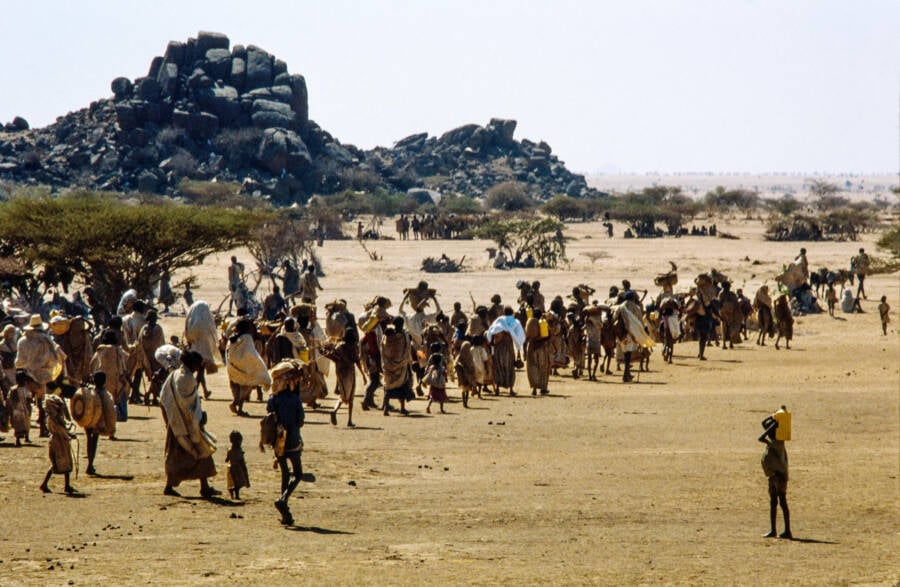
BRIAN HARRIS/Alamy Stock PhotoStarving refugees in Ethiopia fleeing civil war in the mid-1980s.
"I was experiencing starving people all day, every day, and trying my best and doing my job," Bertschinger later said in an interview with The Sun. "What the BBC filmed was just a snapshot of what was going on. But the report had an amazing effect. Before that, people had no idea of the suffering in Ethiopia. It just shows you how important it is reporting these things."
One of the many viewers deeply impacted by the BBC's reporting of the famine was The Boomtown Rats' singer Bob Geldof.
"It was horrifying," Geldof said, per a New York Post report. "It seared itself into my head... These people were dying of want in a world of surplus."
Geldof wanted to do something to help the people in need, but he said that he soon realized the situation "demanded more than simply putting a buck or two into the local charity box. So I thought I'd do a song."
Band Aid's "Do They Know It's Christmas?" Was A Precursor To Live Aid
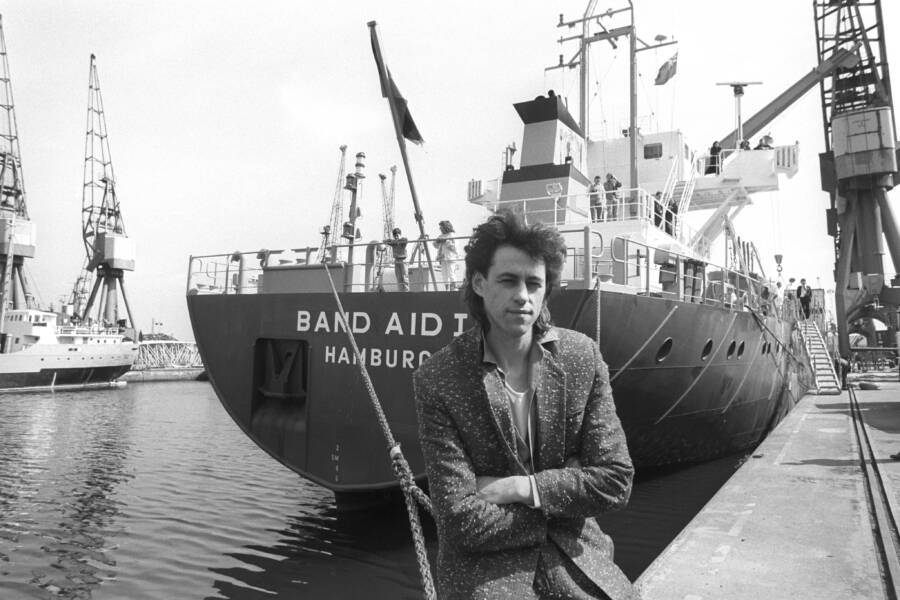
PA Images/Alamy Stock PhotoBob Geldof, the Irish musician behind Band Aid and the Live Aid concert.
In late 1984, Geldof organized Band Aid, bringing together a group of popular musicians like Sting, Ultravox's Midge Ure, Bono, George Michael, and more to record a song titled "Do They Know It's Christmas?"
The single became a massive hit, raising millions for famine relief in Ethiopia. In its first week alone, the song sold more than a million copies, making it the fastest-selling single in UK chart history up until that point. Before long, millions more of the copies would be ordered by captivated listeners.
Still, Geldof felt that it wasn't enough. So many lives had already been lost, and it was likely that more would die if the famine went unchecked.
Band Aid had proven successful — and inspired similar efforts like USA for Africa's "We Are the World" — but Geldof had a vision for something even more ambitious: Live Aid, a massive benefit concert that would book the hottest talent in the world, performing at two venues simultaneously at Wembley Stadium in London and JFK Stadium in Philadelphia.
But putting such an event together was no easy task.
Organizing Live Aid Was A Logistical Marvel
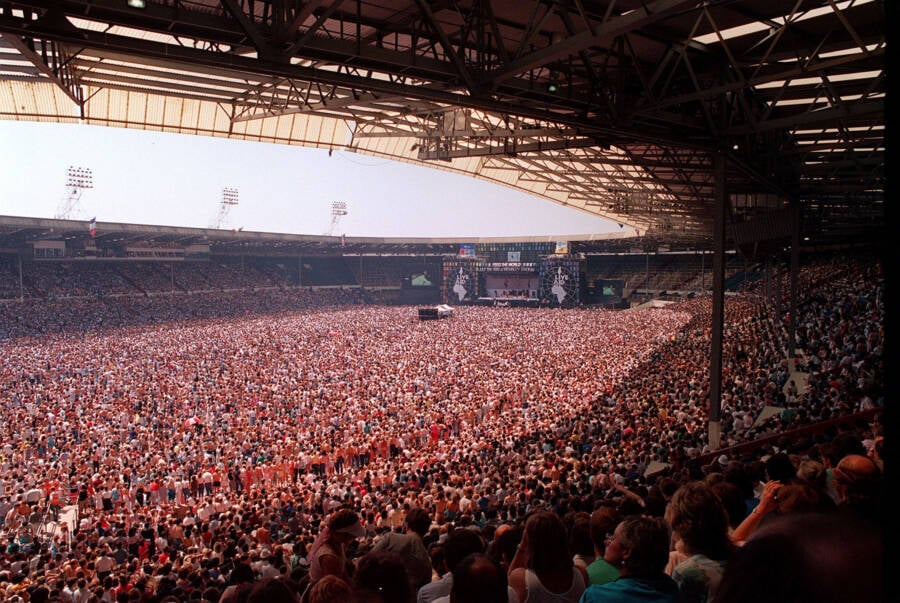
Trinity Mirror/Mirrorpix/Alamy Stock PhotoThe crowd at the Live Aid concert in London on July 13, 1985.
Putting together Live Aid presented enormous challenges. The event required coordinating between two massive shows at the same time, across the Atlantic Ocean. The 16-hour marathon would feature more than 70 acts performing across both venues, with satellite technology linking the performances for a global television audience on July 13, 1985.
The logistics were staggering. Artists had to be scheduled with military precision, allowing for satellite delays between continents. Equipment changes between acts required choreographed efficiency.
Most remarkably, many of the world's biggest stars agreed to perform at the Live Aid concert for free, contributing their time and talent to the Ethiopian cause. That said, production manager Andy Zweck later admitted, "Bob [Geldof] had to play some tricks to get artists involved. He had to call Elton and say Queen are in and Bowie's in, and of course they weren't. Then he'd call Bowie and say Elton and Queen are in. It was a game of bluff."
The concert opened at Wembley Stadium at noon London time with Status Quo's "Rockin' All Over the World," setting an energetic tone that would carry through the day. And as the sun set in London, the focus shifted to Philadelphia, where the concert continued into the American night.
Live Aid's Unforgettable Performances
Live Aid delivered numerous career-defining moments for artists.
Queen's 21-minute set at London is often cited as one of the greatest live rock performances ever. Freddie Mercury commanded the 72,000-strong crowd with theatrical flair, leading the audience through hits like "Bohemian Rhapsody," "Radio Ga Ga," and "We Are The Champions." The performance revitalized Queen's career and showcased Mercury at his charismatic peak.
U2's emotionally charged performance included Bono's decision to jump into the crowd during "Bad," creating an intimate moment that contrasted with the event's massive scale. The Irish band's memorable set helped establish them as one of the world's most incredible live acts and demonstrated a commitment to social causes that would define their careers.
David Bowie delivered a famous rendition of "Heroes," while Paul McCartney's performance was nearly derailed by technical difficulties during "Let It Be" — ironically, the microphones failed during a song about acceptance. Technical issues aside, though, the performance became iconic as other singers soon joined McCartney on stage and the crowd sang the song in unison, despite not being able to hear McCartney's vocals properly.
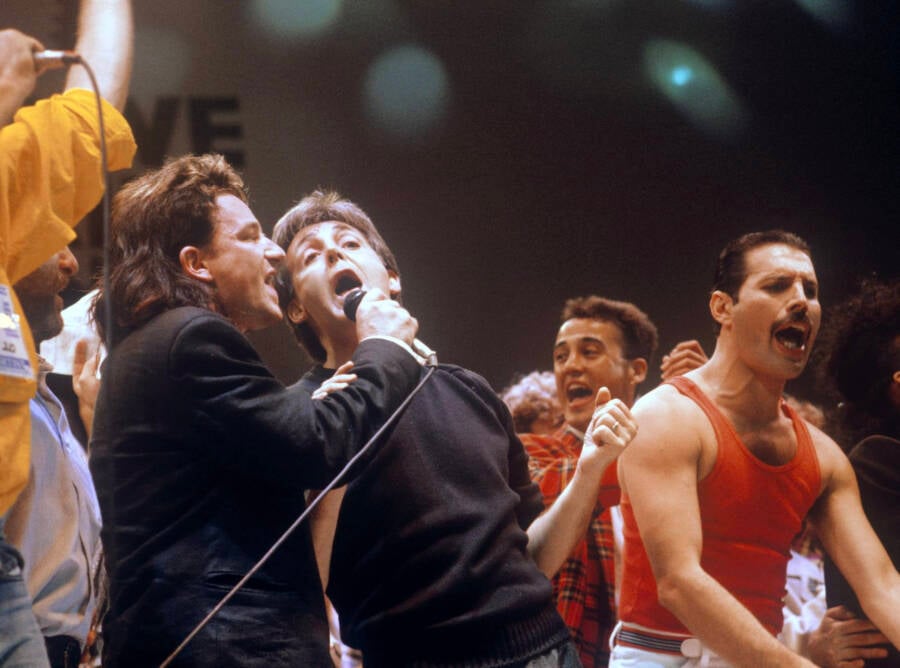
Live Aid/ABC/BBCBono, Paul McCartney, Freddie Mercury, and others sing Live Aid's finale song in London, "Do They Know It's Christmas?"
Phil Collins, meanwhile, achieved the unique distinction of performing at both venues, flying on a now-retired supersonic Concorde jet from London to get to Philadelphia on time in order to play two sets on the same day.
The Philadelphia concert featured equally memorable moments. Madonna's performance helped cement her star status, while Bob Dylan's appearance with Keith Richards and Ron Wood proved chaotic but, in a way, embodied the event's spirit of musical collaboration across genres and generations.
Yet, despite this incredible feat of coordination, Geldof said he was not "proud" of Live Aid as an event. "It's the actual commission that I stayed on for a year with the leaders of Africa and the global north," he told The Independent. "It was fascinating and I didn't know I'd be fascinated by that."
Much-Needed Relief For Ethiopians, Allegedly Held Back By Mengistu's Regime
Live Aid's reach was extraordinary for its time, especially considering how many tuned in to see the shows on TV. An estimated 1.9 billion people across 150 countries watched the concerts in London and Philadelphia.
The event also managed to raise more than $100 million for Ethiopian famine relief, funds that were channeled through various humanitarian organizations to provide food, medical supplies, and infrastructure support. But reports later said there was one major roadblock: Mengistu's regime.
"Mengistu was following a very different agenda than Live Aid, which was made starkly clear when he refused to allow aid to be delivered across the lines of his war with the rebels in Tigre, Eritrea, and the northern portions of Wollo, where 60 percent of the country's famine victims live," wrote SPIN reporter Robert Keating in 1986.
Other relief agencies, anthropologists, and humanitarian groups asserted that Mengistu would not allow food to move across the battle line, despite any "concessions" he claimed to be making. Live Aid set out to raise money for the people of Ethiopia, but Ethiopia was a country divided by warfare and under the rule of a dictator whose legacy is his genocidal "Red Terror."
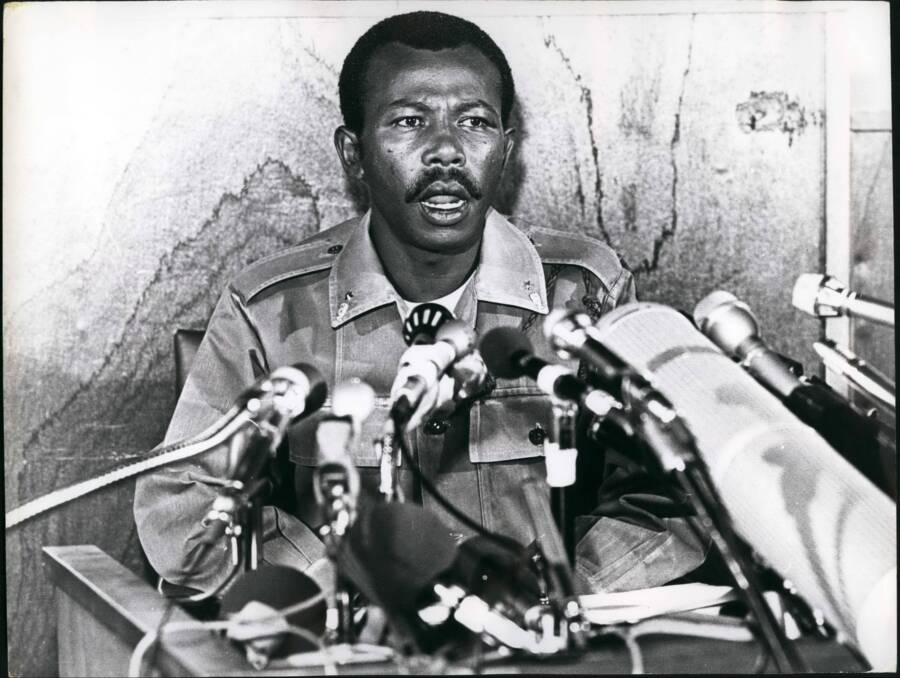
ZUMA Press, Inc./Alamy Stock PhotoMengistu Haile Mariam, the former Ethiopian dictator who was convicted of genocide in absentia.
"Food has been given to Ethiopia for humanitarian purposes," anthropologist Bonnie Holcomb said at the time, "but it has served as bait in a trap that is part of an ongoing program to restructure Ethiopia's society."
Years later, in March 2010, the BBC reported that a whopping 95 percent of the aid raised for Ethiopian famine relief in 1985 was diverted by rebels and spent on weapons — claims that Geldof and a number of charities strongly denied. Notably, by November 2010, the BBC apologized over their reports, admitting that they had "no specific evidence" to back up the earlier claims.
As a music event, Live Aid was one of the greatest in history, but as a charity, its legacy is somewhat complicated. The 40 years since the benefit concert haven't made that any less murky. It's still debated how much of an impact the shows had outside of raising global awareness of famines and how much money actually reached those who desperately needed it.
As for Mengistu, he faced increasing rebellion in Ethiopia and eventually lost the support of the Soviets, which weakened his overall power. By May 1991, he saw the writing on the wall and fled Ethiopia for Zimbabwe, where the former dictator, now in his late 80s, remains to this day, despite being found guilty of genocide in Ethiopia in absentia back in December 2006.
Though many Ethiopians are still calling for Mengistu's extradition, as Live Aid's 40th anniversary rolls around, Mengistu is living freely and comfortably in Zimbabwe. Tragically, it's unlikely that he'll ever face justice.
After this look back at the Live Aid concert, take a deep dive into Woodstock. Then, check out wild photos from history's most famous music festivals.
